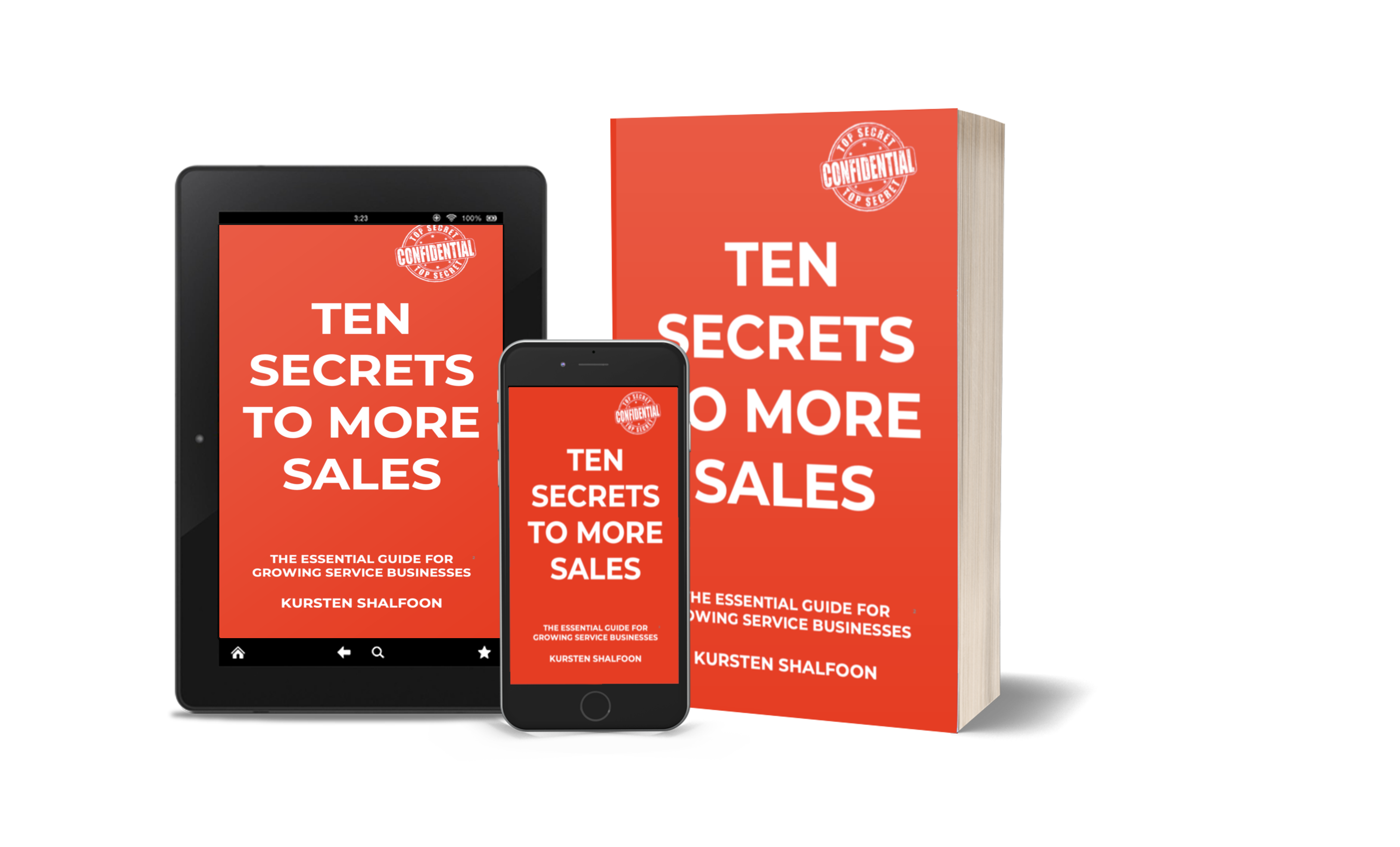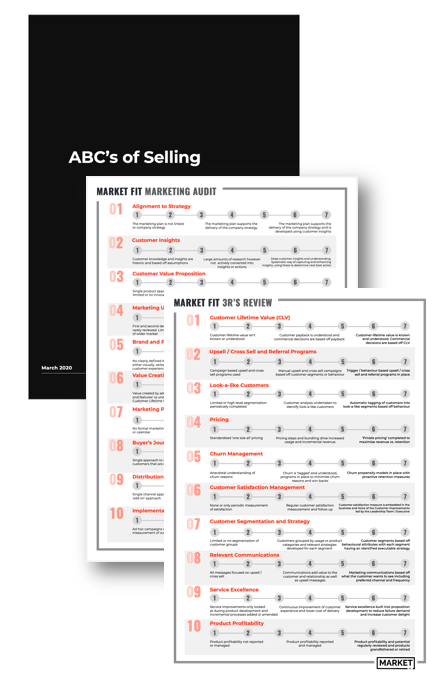Secret 1: Fish Where the Fish Are
The Smartest Fisherman on the Sea
Many years ago, like millions of Kiwis before me, I set out on the Great Kiwi Overseas Experience (OE). Unlike most, I got on the plane with a clear view of what I wanted to do and what I wanted to achieve. Sure, the buzz of discovering the world was there. But more than that, the OE meant the start of my business career and my chance to make it on the biggest of stages.
A few months in, I realised something else. I wasn’t that different from most of my fellow OEers after all. Sure, I was clearer in my goals than most, more focused on what I wanted to achieve, and perhaps more committed to my career. But just like millions of my countryfolk before me, I missed my homeland like crazy. It didn’t matter how busy I was or how great my career was. Nothing could make me forget the things that made New Zealand great.
There was nothing really special about my homesickness. Like most Kiwis, I missed the ocean. For me, it was something specific—something more than just the beach. You see, some people missed the sound of the ocean; others just looked at it. But what I missed was being on the water—those great lazy days messing about with boats, getting out there and catching fish with a few mates and a cold beer or two.
By the time I found some success, I had promised myself two things. When I returned home, I wanted a bach. Once I had that bach, I was going to need a boat.
Chasing Fish
I didn’t want just any boat. I wanted a fishing boat—a real fishing boat—one that fish would magically throw themselves at, one all my friends would love, luxuriating in the sun and shooting the breeze. I wanted a boat that just knew where the fish were, would always put me on the spot, and wouldn’t dream of coming back empty. My friends had boats like these. I wanted one.
Not long after our bach was built, I raised the boat idea with my wife. I sold the dream hard—fresh fish every night, fish every way: battered, breadcrumbed, barbecued, sushi, ceviche, a husband providing—you name it, she’d have it. Amazingly, she agreed.
My first fishing trip was two weeks later. There were three of us, keen as mustard and ready for anything the ocean could throw at us. We got lucky on the second spot and pulled in our first fish. It was a snapper, just legal and nothing flashy, but that didn’t matter. We’d christened the boat. We had more to come.
Then things went quiet. The bites slowed. Time slowed. It got hot, the chat died down, and the beer got warm. Everyone knew the fish had gone. We did the natural thing. We moved on. And on. And on…
It was the fuel tanks that stopped us. We almost burned through both of them. We were increasingly desperate, looking for fish. At first, we were convinced the big ones were just around the corner, laughing at our growing misfortune. By the end, we hadn’t taken any bloody fish.
When we realised there was nowhere left to try, when the tanks were almost empty and any sense of carefully thought-through fishing strategy was a long-gone memory, we accepted defeat and came back in.
We’d gone everywhere, close to shore, out deep, up and down the coast. We stayed at least fifteen minutes in each spot. The boat went like a dream, and except for almost running out of gas, she brought three sunburned fishermen safely back home—three fishermen and one fish.
It was only later, over a debrief with a friend (a real fishing friend), that I realised I’d ignored the First Rule of Fishing: fish where the fish are. And, you know what? I really should have known better. Because my first Secret to More Sales is to fish where the fish are.
|
“If you chase two rabbits, you will not catch either one.” Russian Proverb |
Now, before we go on, I’m sure you have already noticed I use a lot of sayings and a lot of quotes. They’re usually ones you’ll know pretty well. Sometimes, some people find that a bit trite. But here are two things to remember about sayings:
- There’s a reason you know them well. That’s because they’re usually true and easy to remember.
- If they’re usually true and easy to remember, well, as far as I can see, that’s a pretty good reason to use them.
Learning How to Fish
Fish Where the Fish Are is a deceptively simple idea. It’s also one that a lot of my clients struggle with. Staying in your lane can be counterintuitive; most people want to search for more, to look somewhere else. There’s always that fear of what you might be missing. So, a lot of my clients don’t stay the course and instead submit to their fear. They go looking for a lot of new customers. All too often, they return poorer, chastened, empty-handed, and distressed.
I can understand this fear; remember, I’ve been through it. I had to fight the temptation when starting out in business, and I remember how hard it was to convince myself to stay on the path.
Whenever I talk about fishing with my clients, I keep that feeling in my back pocket. It’s extremely powerful to have empathy for your clients and let them know you get it. Back in the day, struggling against temptation, I used to break Fishing Where the Fish Are down into a series of supporting ideas. I found it easier to stick to the concept this way. You see, taken individually, these ideas are a little easier to understand and digest. But taken as a whole, they become an irresistible force.
Let’s look at a few ideas that support fishing, starting with Experts Get More.
Experts Get More: Using Expertise to Create More Revenue
Before she casts off, the expert fisherman knows what fish she’s targeting. Knowing this, she sets her gear, hooks, baits, lure lines, and bite times accordingly. That way she knows she’s ready, everything primed to land that one fish.
Here’s an example: If you’re chasing tarakihi, then adapt your gear. Remove the sliders that delivered snapper last week and replace them with a smaller hook. Take smaller bait. And don’t waste time fishing spots that tarakihi ignore; change your approach to suit the target.
The best fishermen know where the fish are and how to catch them. They don’t waste time randomly moving from spot to spot, and they don’t come home empty-handed. Their experience tides them over the dry patches when others can’t catch a cold. Their targeting and their gear mark them as next-level fishermen—the fishermen the others admire.
Or the experts.
Successful businesses do the same. They focus on solving a specific customer pain point for one sort of customer. They don’t go wide. Instead, they go deep and focus. They don’t waste time trying to attract business at the edge of their expertise. They find a niche, they focus, and they become experts.
Everything in their business helps create expertise. Their business strategy is built around it, and their products are built on it. They use tools to support it.
And when it comes to attracting customers, they do the same: they ignore broadcast media in favour of targeted media. They don’t waste their time on spray and pray mail drops. Instead, they build mailing lists.
They carefully select not just their target customers but also the tools that will deliver and retain them. Here’s a great example of what can happen when you become an expert:
Think about this: knee replacements are a dime a dozen these days. But you’d never dream of going to your GP for the surgery. GPs are generalists, perfectly good in that role, and often make good money. But a problem like a knee? You’re going to be an expert. In this case, a specialist.
Naturally, because they are specialists, you’re willing to pay them more. Remember? Experts Get More.
But that’s not their only advantage.
A knee specialist spends all day focused on one thing. While GPs deal with the flu, rashes, infections, minor accidents, or ailments, your knee specialist looks at nothing but knees. The very act of specialisation builds expertise, more intellectual property, and eventually fame for your own process or system. People come to you because they know you’ve worked it out, they know and trust your approach, and your fame and reputation for your approach precede you.
This is the perfect virtuous circle: the more customers you get, the more expertise you build, the more of a reputation you build, the more customers you get, the faster you can deliver, and the more profit you make. I think you see the picture. This is how an expert comes to own a space in a crowded market.
When a patient looks for a solution to their knee problem, it becomes more and more likely they’ll gravitate towards the specialist, happy to pay more to have their problem solved. That’s the generalist’s conundrum and the hidden risk of straying broad. Is it worth trying to help everyone and maybe ending up helping none?
Of course, not all businesses commit to expertise. Many assume (like casting the net wider) that you’ll find more customers through a broader proposition. If I had a dollar for every business I’ve seen doing this, I’d be a lot closer to retirement and spending more time on my boat. But this just isn’t the way it works, especially today. Going wide means stretched resources, mediocre propositions, weaker results, and poor customer experiences. The wider you go, the further from your strengths you are. Drift too far from your strengths, and your business is in trouble. It’s a one-way trip to generalist obsolescence.
Experts are Easy to Find
Here’s the thing: Customers today don’t need or want a generalist. They want their problem fixed, and they want an expert to do it for them. Google and social media mean experts are just a click away; it’s never been easier to find the right solution or for businesses to deliver the service and results you expect. In this environment, a generalist will suffer and soon be found out.
Just as it’s never been easier to find an expert, it’s also never been easier for customers to rate a service. If your service is general and not as capable of solving a problem as an expert’s, it’ll take no time for negative reviews to pile up.
A little later in this book, you’ll learn all about raving fans. Their opposites are called active detractors. In an environment where customers can (and do) easily share views and where new businesses need a strong digital reputation, building active detractors through a generalist approach can rapidly become a death spiral. Great service is rewarded with recommendations and the opportunity to build loyalty; poor service will attract the opposite. And you can never expand a business if you don’t get the chance to prove yourself from the start.
When your business becomes the ‘go-to’ expert in your field, you'll attract even more customers, which in turn becomes a perfect virtuous circle. As you get more customers, you learn from them, enhancing your expertise even as you earn more and create a bigger and better business.
Experts Know How to Disrupt
And there’s another way of looking at this. Staying in the middle and stubbornly remaining a generalist leaves you wide open to competitive interruption. Being everything to everyone just opens the door for sharper, leaner, and more aggressive competitors to find a way in. Once they’ve found that angle, they’ll simply eat you alive.
In the last few years, that angle has been technology. Take a look around; the landscape is littered with the dying remains of once-thriving generalists. Here are a couple of great examples:
- Since its origins in the Northwest USA, Amazon has had a profound impact on bookselling. Physical stores just can’t compete with the never-ending shelf. And those that try will inevitably fail, usually meeting a gruesome end (I’m looking at you, Borders). Mass market and generalist titles, the bread and butter of the industry, along with eBooks and audio, are now dominated by Amazon. The result? In the US, they own 50% of the print book market and over 75% of the digital market. Generalist giants like Barnes and Noble have flirted with insolvency, while in the UK, chain stores have bitten the dust one after another trying to compete.
But here’s the interesting bit: where the generalists have fallen, the specialists have risen. Indie bookstores (Time Out, Unity, or Scorpio here in New Zealand, or great overseas examples like the Last Bookstore in Los Angeles or Daunts in London) have continued to trade, with a level of expertise and specialisation a chain store could never achieve. In fact, so strong has the drift to niche been that the UK’s last remaining generalist book chain, Waterstones, has been completely rebuilt in the indie tradition, returning to the book trade’s specialist roots.
2. Remember the suburban sports stores of your youth? For me, that means Stirling Sports. Summer meant a new cricket bat or ball, while winter saw the store swap to rugby, netball, and football equipment. The owner knew my father and my grandfather. In fact, they knew most of their customers; many of them had been going to Stirling Sports since it opened in 1964. They went there because they knew the store carried everything, and they knew they could always get what they needed.
Have you ever wondered what happened to good old Stirling Sports? Two words: Rebel Sports. A sharper, more focused competitor, part of a tightly focused larger retail group, Rebel Sports launched in 1996 and soon scooped the middle out from Stirling Sports. The familiar trajectory of falling sales and underinvestment followed. Gradually, you learned the equipment you wanted wouldn’t be in stock, so you went to Rebel.
Now, that didn’t mean all sports trades immediately went to Rebel. Again, look around. You’ll see dozens of specialists have sprung up, dealing in everything from hi-tech shoes to performance cycles, individual sports, and even specialist clothing. None of them wants to own the middle, to be everything to everyone. They all stay in their lane, becoming experts in their fields and go-tos in their own right.
Back to Stirling Sports. What did they do when Rebel Sports came knocking? They had a pretty stark choice. Competing for the middle wasn’t going to end well. The competition was well-funded and backed by the expertise of a high-performing retail parent group.
Stirling Sports shifted gears. They realised the generalist gig was up and changed tack. They now specialise in sportswear and activewear. No more cricket bats, balls, or pads. But if you’re after sports clothing or shoes from some of the world’s leading brands, Stirling Sports is your place. They’ve now got sixty stores around New Zealand, including a retail footprint in some of the leading malls and shopping districts nationwide.
It’s not just exposure to competition that means generalists face a hard road. My second supporting theme for Fishing is a surprising one that not a lot of people are aware of. It’s one of the hidden costs of trying to be everything to everyone.
Experts Learn to See More
Have you ever noticed this? You do something for the first time, and suddenly it seems everyone’s doing it? You buy a brand of glasses, and suddenly everyone’s wearing them. You learn a new word, and here we go; everyone’s using it. It’s the same with business: focus on a niche, and you’ll see all the opportunities you’d previously missed.
It’s the same with ads. Let me ask you something. How many billboards, posters, or ads actually grab your attention? Yep, that’s right, not many. Even fewer of them actually spark your interest, right?
It’s tempting to assume this is because ads are boring. You’re way too good to fall for boring ads. In fact, you’re so good that you can immediately discount anything you deem unworthy of your attention. Except…
None of that is true. Well, some ads are boring. That is true. But that’s not why you ignore them. The answer turns out to be much more interesting.
Most marketing messages have no impact on you because they never get to you. Instead, they’re filtered out. The technical name for this is reticular activation. Your Reticular Activation System (RAS) is a bundle of nerves sitting in your brain stem. It has a specific job: it filters the dizzying amount of information hitting your brain every second into useful or non-useful information. If it’s something you haven’t encountered before, your RAS will likely filter it out and de-prioritise it.
But if it’s something you’re aware of already or have just picked up for the first time, your RAS lets it through, letting your brain recognise it and act accordingly.
If you want to see how this works, here’s a great little test.
|
Surprise me. Did you remember any? Maybe you managed to name one or two? Once you open your eyes and see just how much green you missed, you’ll take a pause. This is the inverse of reticular activation—you were concentrating so hard on the red that you forgot to see the green.
Here’s how that works in business: SMEs often fear specialisation. They’re too busy, distracted by the opportunities they can already see. Their RAS is hard at work, filtering opportunities elsewhere.
But then they focus, and something changes. New worlds of possibility open up. The opportunities hiding in plain sight start to appear, driving growth and expansion even within their targeted niche business. And it’s this combination of specialisation and opportunity that makes businesses like this so potent.
|
“Our eyes only see and our ears only hear what our brain is looking for.” Dan Sullivan |
Of course, it’s not just in business where experts learn to see more. Here’s James Clear, the author of Atomic Habits, expanding on how specialisation through decision-making is a trait shared by many successful and high-functioning people.
“The great irony is that by limiting your options and remaining focused until you master a skill, you actually expand your options in the long run. Life-changing optionality is a by-product of providing great value, which can only be achieved through focus. Highly focused people do not leave their options open. They make choices. If you commit to nothing, you’ll be distracted by everything.”
Here’s another example, this time from Jack Butcher, the entrepreneur behind the online business Visualise Value. A few years ago, Jack was living the dream. Or he was living a dream—one where he was slaving for a large creative agency, winning business and big profits for the company, and not getting his share. After a couple of years, he decided he could do better and left to set up his own agency.
Now, this isn’t the part of the story where the Expert Learns to See More. In fact, the truth is that Jack really struggled. He was a one-man band, and while he was great and the clients loved him, he couldn’t generate enough revenue from his own labour. So, he decided to focus, to mine a niche, and to become an expert. He moved his agency entirely online. He went from selling his labour to selling his expertise.
Eighteen months later, as a ‘one-man band,’ he was turning over $180K/month, selling online tools for building digital creativity. Jack doesn’t waste time building bespoke campaigns anymore; he found a way to focus, converting his expertise into a product he could monetise. As he puts it...
|
“Opportunity expands as focus narrows.” Jack Butcher |
In a counterintuitive twist, the quickest path to growth often involves saying no and saying it often – saying no to ‘opportunities’ that you could do but fall outside your expertise. Saying no to customers who don't align with your ideal customer profile. And saying no to things that don’t get you closer to where you’re heading.
|
The fastest way to growth is saying no more often. |
Experts Sell More: Land and Expand
We’ve already seen how specialisation and expertise naturally attract customers. But many businesses still fear focusing down, worrying it will reduce growth and expansion. In fact, the opposite is true.
In today’s environment, it’s never been easier for customers to churn. The rise in digital and non-assisted services, the decline of handcuff contracts, and Com-Com-type regulations are all working to put the customer in charge. It’s no wonder smart organisations today obsess about customer experience and loyalty (you’ll hear a LOT more about this in The Secret 7: Turn customers into raving fans). After all, it’s expensive to acquire a new customer, so retaining them can have a hugely beneficial impact on your bottom line.
At the same time, we’ve already seen how customers seek experts for their problems. No one wants to waste time with a generalist when they can find a specialist. Once an expert lands a customer, their expertise opens the door to a raft of further benefits.
How do you think a customer feels when an expert solves their problem? Do you think they are more or less likely to show loyalty, return, and talk about their experiences with friends? To put it another way, are they more or less likely to be committed to an expert or a generalist?
The answer is obvious. Satisfying and retaining customers is how experts build their businesses.
Because once you’ve ‘landed’ a customer and your expertise has solved their problem, you earn the right to learn more about them. Building trust means they are likely to open up about other things they are struggling with. This is where you can expand, with the trust and loyalty of your satisfied customers defining your growth.
Additional services, led by the customer’s needs, are the natural outcome of this relationship. Built on the back of customer intel, these services are almost certain to satisfy their needs. Landing on the back of a customer’s biggest problem and then expanding on the back of your increased knowledge naturally builds a better and more effective business.
Satisfied customers are customers who trust. Take their problem away and understand their needs, and you have a loyal client for life. That’s an enormous privilege, and smart experts leverage that trust to expand. Remember when we talked about building the right tools for an expert business? Those tools should include ways to communicate with your customers—to talk to them and hear from them. Whether it’s simple things like automated email lifecycle programmes, more sophisticated options like NPS or survey tools, or even just good old-fashioned talking, loyal customers will tell you more about themselves (more on that later in the book). In doing so, they’ll give you priceless insights into other problems they may have—problems you and your business may be able to solve.




